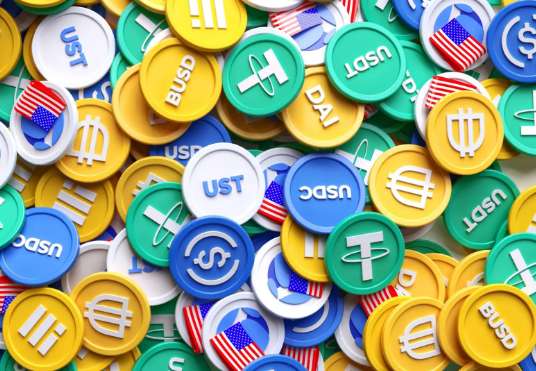Circle Wants 'Reversible' Stablecoin Payments, Saying It Would Help Stablecoin Join The Mainstream Finance
As the world's second-largest stablecoin issuer, Circle is exploring the introduction of a "reversible" mechanism for its token transactions.Circle President Heath Tarbert revealed this developme

As the world's second-largest stablecoin issuer, Circle is exploring the introduction of a "reversible" mechanism for its token transactions.
Circle President Heath Tarbert revealed this development in a recent media interview. He stated that establishing a mechanism allowing for refunds in cases of fraud or disputes would help integrate the stablecoin industry into mainstream finance. Tarbert acknowledged the "inherent tension" between achieving the finality of instant transaction settlement and the reversibility of transactions.
This statement marks a significant shift in attitude within the cryptocurrency industry. For a long time, the industry has tried to distinguish itself from so-called "Traditional Finance" (TradFi), and the "immutability" of transactions has been considered a core advantage of blockchain technology. To some staunch cryptocurrency supporters, Circle's exploration borders on "heresy." A prominent venture capitalist even stated that calling Circle's planned project a blockchain would be "offensive."
This move comes as the United States paves the way for the widespread adoption of stablecoins, with banks and credit card companies increasingly exploring blockchain technology. For investors and financial institutions seeking safer, more compliant digital assets, Circle's exploration could make its stablecoin a more attractive option, potentially accelerating the "stablecoin gold rush" predicted by institutions like Goldman Sachs.

Farewell to "Immutability": A Major Shift in the Crypto World
Circle's latest exploration directly challenges the cornerstone of blockchain "immutability." As a public digital ledger, transactions recorded on a blockchain are typically irreversible once confirmed, a characteristic once hailed as a sign of its technical superiority.
Tarbert, a former chairman of the U.S. Commodity Futures Trading Commission (CFTC), noted that while it's often said blockchain technology is superior to existing systems in many ways, "some benefits of the existing [traditional financial] system are not necessarily present [in the crypto world] currently." He revealed that software developers are engaged in discussions exploring whether, on specific blockchains, for specific scenarios, and with the agreement of all relevant parties, a certain degree of transaction reversibility for fraud could be achieved.
This departure places Circle at odds with crypto purists but may win favor with traditional financial institutions. By introducing risk control and error-correction mechanisms similar to those in traditional finance, Circle aims to lower the barrier to entry for institutional investors.
Circle's concept of "reversible transactions" will primarily be implemented through its new blockchain, Arc, designed for financial institutions. However, Circle clarified that this mechanism does not directly reverse or undo a transaction on the blockchain itself.
Specifically, payments on the Arc chain cannot be directly revoked. Instead, Circle plans to add a protocol layer that allows transacting parties, upon mutual agreement, to execute a "reverse payment," effectively mimicking the refund process in credit card transactions. This approach aims to balance transaction finality with the need for error correction.
Currently, Circle is testing the Arc chain, designed to enable companies, banks, and asset managers to use stablecoins for payment activities like foreign exchange transactions. However, the Arc chain has faced criticism since its inception, with some executives and developers arguing it is too centralized, contradicting the original purpose of blockchain technology to bypass intermediaries like banks.
Targeting Institutional Clients: Balancing Privacy and Compliance
Circle's strategic focus is clearly on attracting banks and large institutional investors, contrasting with the approach of the world's largest stablecoin issuer, Tether. The latter has built its market dominance by focusing on high-frequency cryptocurrency trading and providing a dollar alternative in emerging markets.
To cater to the strict requirements of institutional clients for financial confidentiality, Circle is also researching options to give users control over transaction visibility. On its Arc chain, while customers' anonymous wallet addresses remain visible, the transaction amounts will be encrypted. Tarbert explained that this addresses institutional needs for privacy.
Regulatory Tailwinds and the "Stablecoin Gold Rush"
Circle's transformation coincides with a favorable macro environment. The United States is gradually establishing a regulatory framework for the stablecoin industry, with Congress passing a landmark bill in July to regulate the sector. Simultaneously, the Trump administration is reportedly strongly supportive of stablecoin development, hoping to extend the dollar's influence into new markets.
Financial services companies are viewing stablecoin technology as a potential path to faster, lower-cost cross-border payments. Currently, the total value of stablecoins in circulation globally is approximately $2.8 trillion. In an August report, Goldman Sachs predicted the industry is at the beginning of a "stablecoin gold rush," forecasting that the market capitalization of Circle's USDC alone could grow by $77 billion by 2027.
Regarding the source of this potential capital inflow, Tarbert expressed uncertainty but sought to downplay banks' concerns about deposit outflows. He suggested that while it is "possible" people might transfer demand deposits into stablecoins, it is "entirely possible" funds could flow in from other asset classes, or even that "new wealth could be created entirely."
Disclaimer: The views in this article are from the original Creator and do not represent the views or position of Hawk Insight. The content of the article is for reference, communication and learning only, and does not constitute investment advice. If it involves copyright issues, please contact us for deletion.